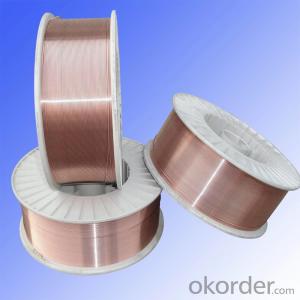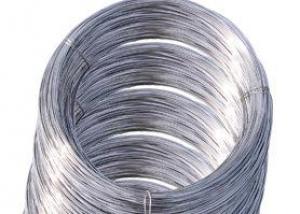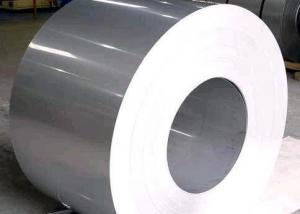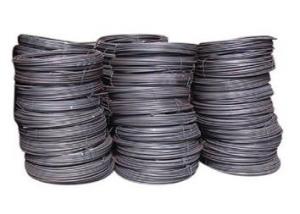Brass Steel Welding Wire/ Strip for Construction
- Loading Port:
- Qingdao
- Payment Terms:
- TT or LC
- Min Order Qty:
- 10 m.t.
- Supply Capability:
- 1000 m.t./month
OKorder Service Pledge
OKorder Financial Service
You Might Also Like
Brass Steel Welding Wire/ Strip for Construction
Main Structure for Brass Steel Welding Wire/Strip
AWS A5.18 ER70S-6
1) Copper coated
2) All position welding
3) Shield gas : CO2
4)Material: Carbon Steel
5)Diameter: 0.8mm-1.6mm
6)Weight: 15kg/spool, 100kg/barrel, 250kg/barrel
7)Flux Content: Without flux
8)Shield GAS: CO2
ER70S-6 is a coppered low alloy steel wire with all position welding.The wire has a very good welding performance and the weld metal shows lower temperature impact toughness. It is mainly for butt and fillet welding structures made by shipping steel and low alloy steel, such as ships , containers, as well as vehicles,engineering and construction machineries, bridges etc.
Datas of Brass Steel Welding Wire/ Strip for Construction:
C | Mn | Si | S | P | Ni | Cr | Mo | V | Cu | |
Standard | 0.06-0.15 | 1.40-1.85 | 0.80-1.15 | ≤0.035 | ≤0.025 | ≤0.15 | ≤0.15 | ≤0.15 | ≤0.03 | ≤0.50 |
Typical | 0.078 | 1.53 | 0.85 | 0.01 | 0.011 | 0.029 | 0.022 | 0.008 | 0.010 | 0.12 |
All products of welding wire were produced by German equipment.
Advanced technologies with advanced equipment.
Main Features for Brass Steel Welding Wire/ Strip for Construction:
Gas-shielded welding wires utilize Co2,argon-rich gas and argon gas as the shielding gases with high production efficiency.Large current may be used during welding to achieve droplet transfer,wiht large melting coefficient of wire, excellent depth of welding penetration on material, little melting residues,high-density current, concentrated heat, small heating area, little distortion of work pieces after welding, etc.
Because of low content of hydrogen in the seam,cold cracking is rare. Good visibility of electric arc facilitates full-position welding and welding at other positions.
Main Applications for Brass Steel Welding Wire/ Strip for Construction:
Welding of various 500Mpa structural steel components;welding of various 500Mpa plates and pipes;full-position welding with a wide range of current.
FAQ:
Why Should You Choose Us?
One-stop purchase service with full set of production line to save your time, cost and energy
Competitive price,Superior quality, Excellent logsitics and Strong finance ability
Professional service team
Picture:
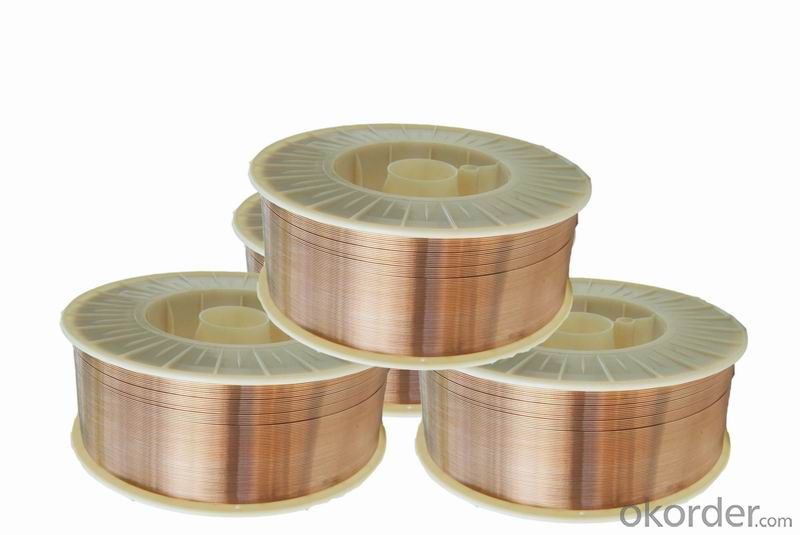
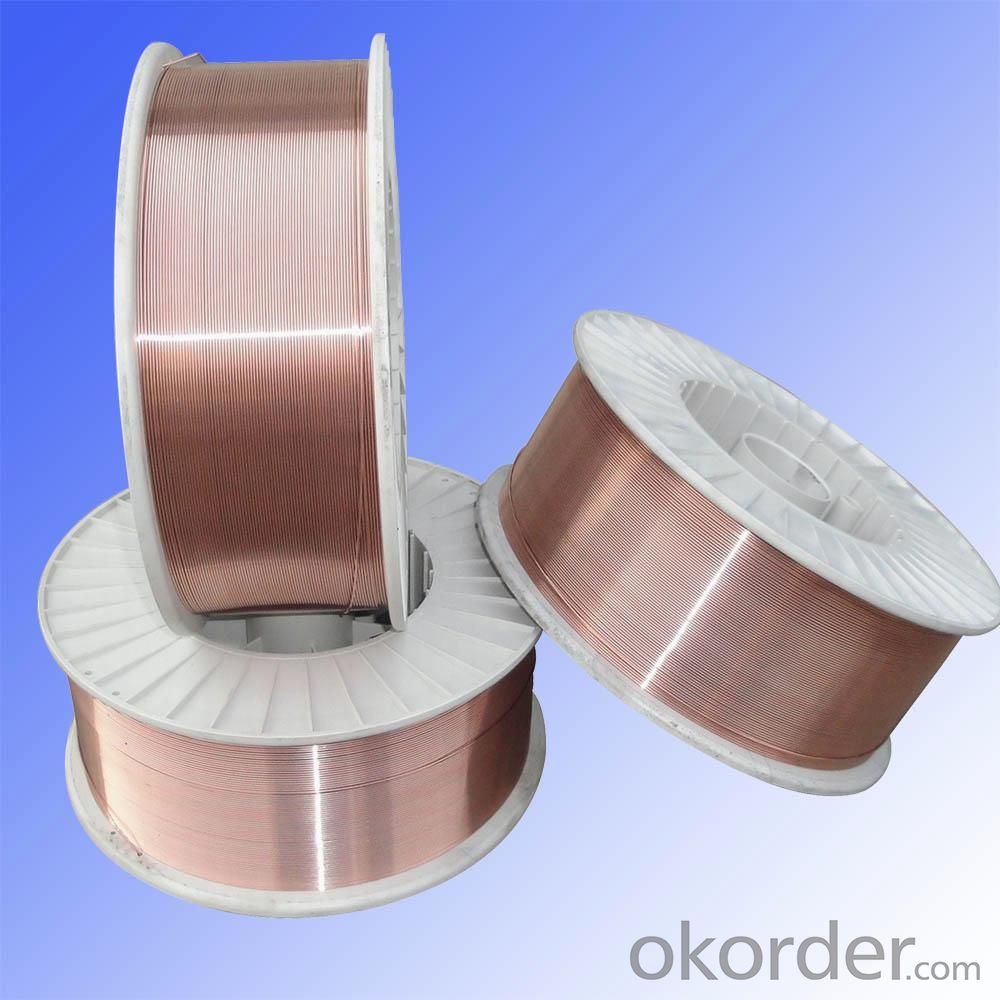
- Q:What are the different wire diameters available for stainless steel wire?
- There are various wire diameters available for stainless steel wire, ranging from very thin to thick sizes. The specific wire diameters can vary depending on the manufacturer and the intended application. However, some common wire diameters for stainless steel wire include 0.020 inch, 0.032 inch, 0.041 inch, 0.062 inch, 0.080 inch, and 0.125 inch. These diameters are often used in industries such as aerospace, automotive, construction, and manufacturing. It is important to note that the appropriate wire diameter should be chosen based on the specific requirements of the project or application to ensure optimal performance and durability.
- Q:Is stainless steel wire suitable for marine environments?
- Stainless steel wire proves to be a highly suitable option for marine environments. Its corrosion resistance is widely acknowledged, which is of utmost importance in such settings due to the abundance of salt, moisture, and other corrosive elements. Specifically designed to endure these harsh conditions without succumbing to rust or corrosion, stainless steel wire finds extensive use in marine applications like rigging, boat fittings, fishing equipment, and marine structures. Furthermore, its remarkable strength and durability enable it to withstand the mechanical stresses and strains encountered in marine environments. As a result, stainless steel wire emerges as a dependable and enduring choice for marine applications.
- Q:What are the different types of stainless steel wire rope constructions?
- There exist various stainless steel wire rope constructions, each possessing its distinct characteristics and uses. Some commonly encountered types are as follows: 1. 1x19 Construction: Comprising 19 wires twisted together into a single strand, with one central wire enveloped by six strands, each consisting of two wires. It offers exceptional strength and limited flexibility, making it perfect for applications necessitating high tensile strength, for instance, standing rigging on sailboats. 2. 7x7 Construction: This construction incorporates seven strands, with each strand composed of seven wires twisted together. It provides satisfactory flexibility and moderate strength, rendering it suitable for applications such as cable railing, garage door cables, and winch lines. 3. 7x19 Construction: Resembling the 7x7 construction, this type of wire rope includes seven strands, each consisting of 19 individual wires. It offers improved flexibility and heightened strength in comparison to the 7x7 construction, thus making it suitable for a wide range of applications, including lifting slings, guy wires, and zip lines. 4. 6x19 Construction: This construction consists of six strands, with each strand comprising 19 wires twisted together. It offers good flexibility and high strength, making it appropriate for applications like crane hoist ropes, winch lines, and overhead lifting. 5. 6x36 Construction: This construction is characterized by six strands, with each strand consisting of 36 individual wires twisted together. It provides excellent flexibility and high breaking strength, rendering it ideal for applications that necessitate both flexibility and strength, for example, elevator ropes, wire rope slings, and tow lines. 6. 1x7 Construction: This construction is composed of a single strand twisted together from seven wires. It offers high tensile strength and limited flexibility, making it suitable for applications that require maximum strength, such as control cables and wire rope fencing. These examples showcase only a fraction of the stainless steel wire rope constructions that are available. The choice of construction relies on the specific requirements of the application, encompassing strength, flexibility, and durability.
- Q:Can stainless steel wire be used for fishing nets?
- Indeed, fishing nets can be constructed with stainless steel wire. Due to its durability and resistance to corrosion, stainless steel proves to be an apt choice for marine settings where fishing nets are frequently employed. The robustness of stainless steel wire enables it to endure the strain and force applied by the captured fish within the net. Moreover, stainless steel exhibits less susceptibility to rusting or degradation in contrast to alternative materials, guaranteeing the enduring and trusty nature of the fishing net.
- Q:What are the common uses of stainless steel wire in the textile industry?
- Stainless steel wire is commonly used in the textile industry for various applications such as wire mesh belts, conveyor belts, and sieves. It is also used for manufacturing cloth drying racks, wire hangers, and clothing display fixtures. Additionally, stainless steel wire is employed in the production of textile machinery components like springs, pins, and fasteners, ensuring durability and resistance to corrosion.
- Q:What are the common uses of stainless steel wire in the automotive exhaust industry?
- Stainless steel wire is widely used in the automotive exhaust industry due to its exceptional properties and numerous benefits. Here are some common uses of stainless steel wire in this industry: 1. Exhaust Manifold Gaskets: Stainless steel wire is used to manufacture exhaust manifold gaskets that provide a tight seal between the exhaust manifold and the engine block. The high strength and corrosion resistance of stainless steel make it an ideal material for this application, as it can withstand the high temperatures and harsh conditions of the exhaust system. 2. Exhaust Hangers: Stainless steel wire is utilized in the construction of exhaust hangers, which are responsible for supporting and securing the exhaust system. The wire's strength, durability, and resistance to corrosion ensure that the hangers can withstand the vibrations, heat, and exposure to environmental elements that the exhaust system encounters. 3. Muffler Baffles: Stainless steel wire is often used to create baffles within mufflers. These baffles serve to reduce noise levels and improve exhaust flow by disrupting and redirecting the exhaust gases. Stainless steel wire provides a lightweight yet sturdy solution that can withstand the high temperatures and corrosive gases within the muffler. 4. Exhaust Stacks: Stainless steel wire is utilized in the construction of exhaust stacks, particularly in heavy-duty vehicles such as trucks and buses. The wire is wound around a mandrel to form a spiral shape, providing strength and stability to the exhaust stack. Stainless steel wire's resistance to heat, corrosion, and mechanical stress ensures the longevity and reliability of the exhaust stack. 5. Exhaust Springs: Stainless steel wire is commonly employed in the production of exhaust springs, which are responsible for maintaining tension and flexibility within the exhaust system. These springs help to absorb vibrations and shocks, reducing the stress on other components. The high tensile strength and resistance to corrosion of stainless steel wire make it an ideal material for these springs. Overall, stainless steel wire is a versatile material that offers numerous advantages in the automotive exhaust industry. Its strength, durability, corrosion resistance, and ability to withstand high temperatures make it indispensable for various components within the exhaust system.
- Q:What are the different wire tensile strength options available for stainless steel wire?
- Stainless steel wire has gained a reputation for its robustness and endurance, making it a favored option for a variety of uses. Wire tensile strength in stainless steel comes in a range of choices to accommodate different needs. The measurement of tensile strength in stainless steel wire is typically conducted in pounds per square inch (psi) or megapascals (MPa). The available options for wire tensile strength can vary depending on the specific grade and alloy of stainless steel utilized. Several common choices for tensile strength in stainless steel wire are as follows: 1. Low Tensile Strength: Stainless steel wires with low tensile strength are generally employed in situations where strength is not a critical factor. These wires usually possess tensile strengths ranging from 50,000 to 75,000 psi or 345 to 515 MPa. They are often utilized in less demanding scenarios such as craft projects, decorative purposes, or light-duty fencing. 2. Medium Tensile Strength: Stainless steel wires with medium tensile strength are commonly used across a wide array of applications. These wires typically exhibit tensile strengths ranging from 75,000 to 150,000 psi or 515 to 1,035 MPa. They are suitable for tasks involving wire mesh, cable ropes, springs, and general-purpose wire products. 3. High Tensile Strength: Stainless steel wires with high tensile strength are specially designed for applications necessitating exceptional strength and durability. These wires usually possess tensile strengths surpassing 150,000 psi or 1,035 MPa. They are often employed in demanding scenarios like aerospace, automotive, marine, and industrial settings where high-stress conditions prevail. It is of utmost importance to select the appropriate tensile strength option according to the specific requirements of your application. Factors such as load-bearing capacity, corrosion resistance, and environmental conditions should be taken into consideration when choosing the suitable tensile strength for your stainless steel wire. Seeking guidance from a knowledgeable supplier or engineer can help ensure the selection of the most suitable stainless steel wire for your needs.
- Q:Can the 8.8 screw be replaced by A2-70 stainless steel screw?
- 8.8 grade products - tensile strength 800N.mm, specified non proportional elongation stress (ensure the load): - 640N.mm;
- Q:What are the different tensile strengths available for stainless steel wire?
- Different tensile strengths are available for stainless steel wire, which determine its ability to withstand stretching or pulling forces without breaking. The range of tensile strengths that stainless steel wire can have depends on its specific grade and alloy composition. Grades commonly used, like 304 and 316 stainless steel wire, usually have tensile strengths ranging from 75,000 to 150,000 psi. These grades are often used in applications where general-purpose corrosion resistance is required, such as in food processing, architectural, and marine environments. For more demanding applications, specialized grades such as 17-7 PH or 302 stainless steel wire can provide higher tensile strengths. These grades can have tensile strengths ranging from 200,000 to 300,000 psi, making them suitable for industries like aerospace and automotive that require higher strength and durability. It is important to consider that various factors, including the manufacturing process, heat treatment, and specific alloy composition, can influence the tensile strength of stainless steel wire. Therefore, consulting the manufacturers or suppliers is crucial to obtain accurate and up-to-date information on the available tensile strengths for specific stainless steel wire products.
- Q:How is the diameter of stainless steel wire measured?
- Stainless steel wire's diameter is typically assessed through a gauge system, which assigns a specific number based on its diameter. The American Wire Gauge (AWG) is the most commonly utilized system for stainless steel wire. In this system, the wire's diameter decreases as the gauge number increases. For instance, a 20-gauge wire will have a larger diameter compared to a 24-gauge wire. To measure the diameter precisely, specialized tools like a micrometer or wire gauge are employed. These tools accurately ascertain the wire's thickness, ensuring accurate measurements. It should be noted that the diameter measurement might slightly differ depending on the manufacturing process and the particular application of the stainless steel wire.
1. Manufacturer Overview |
|
|---|---|
| Location | |
| Year Established | |
| Annual Output Value | |
| Main Markets | |
| Company Certifications | |
2. Manufacturer Certificates |
|
|---|---|
| a) Certification Name | |
| Range | |
| Reference | |
| Validity Period | |
3. Manufacturer Capability |
|
|---|---|
| a)Trade Capacity | |
| Nearest Port | |
| Export Percentage | |
| No.of Employees in Trade Department | |
| Language Spoken: | |
| b)Factory Information | |
| Factory Size: | |
| No. of Production Lines | |
| Contract Manufacturing | |
| Product Price Range | |
Send your message to us
Brass Steel Welding Wire/ Strip for Construction
- Loading Port:
- Qingdao
- Payment Terms:
- TT or LC
- Min Order Qty:
- 10 m.t.
- Supply Capability:
- 1000 m.t./month
OKorder Service Pledge
OKorder Financial Service
Similar products
New products
Hot products
Related keywords

